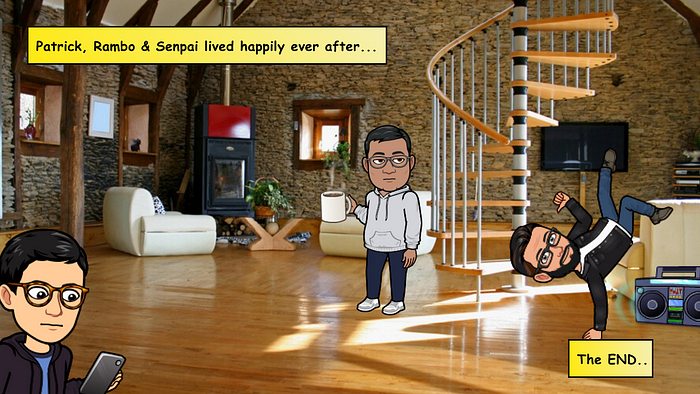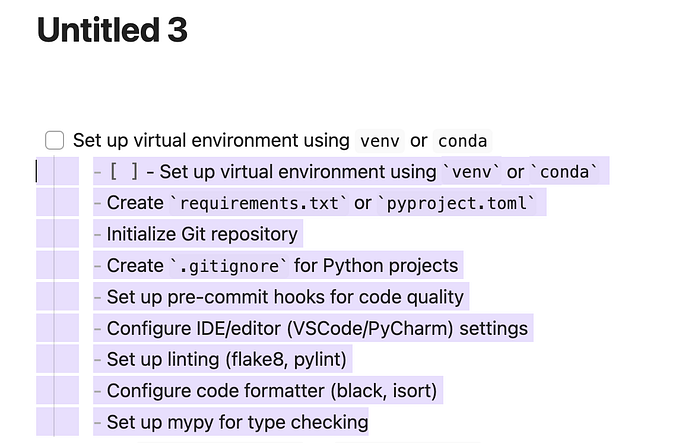Zoomies to find rooms and roomies on the go — A Case Study

The story of why we built Zoomie and how it will help users like us during these challenging times of finding a place to live.
In this case study, we have described our process of designing an iOS app — Zoomie -Finding rooms and roomies on the go. In this project, we have built an MVP and designed the edge cases while solving user needs targeted toward the Indian audience. This was a project on which we worked during a Design Hackathon.
⚠️ Brief
Enhance the relocation experience of folks moving to Bangalore. Bangalore has become the hub of technology in India. With startup culture booming in the country, more and more people are moving to Bangalore, for their jobs. A perpetual problem faced by these people is finding a place to live and roommates to live with. Create a platform, where a person could go to explore long-term accommodations, in the form of flats, PGs, Co-living spaces, etc., and connect with people to live with. The goal is to make people feel as comfortable as possible with their move to Bangalore.
⛔️ Problem Statement
People moving to Bangalore might know what he wants, but entering a new place not only brings anxiety to finding the most suitable locations and homes, but also bafflement. There seems to be a need to bring comfort to the fingertips of the users. Searching for real estate also brings up the issue of lack of tangibility as users cannot feel the space and estimate the dimensions. There is a need to bridge the gap between physically visiting the places and viewing them online. Moreover, people also look for roommates on different platforms and seek a homely stay away from home.
🎯 Our aim for this sprint
There is no failure except in no longer trying.
- Ideating and creating the MVP for the concept.
- Backing our product based on research.
- On-field research to understand valuable prospects and collect valuables.
- Identifying the right participants and using the right research methodology to find data points for our product.
🪧 Strategic Planning
- Exploring the topic
- On-field Research
- Ideation
- Product Design
- Branding/ Marketing








🤔 How we started off?

✅ Research Objectives
- Assess the current situation and understand how to make the process more smooth and less hectic.
- Identify issues that arise during looking for new places in online mode.
- Provide recommendation to improve the currend practices.
🏁 Main Checkpoints

🌐 Secondary Research
- 1,000 people move to Bangalore every day. This would mean we have to build 250 homes and one school everyday, and a hostel every second day. We do not have a system to deal with this. — Dr Ashwin Mahesh. Urbanisation needs to be managed in a city that is growing at such a tremendous pace.
- Migrants make up almost half of Bengaluru.
- Suresh Moona says three main factors encourage migration to Bengaluru: language cosmopolitanism, salubrious weather and business friendliness. “Unlike in other South Indian cities, you can get by here with just English and Hindi”.
- Although air pollution and traffic congestion are problems, the weather is pleasant.
- The most important reason for migration is the city’s ability to generate employment and opportunity. “There is an ease of doing business here, which explains the city being a hub not just for IT but also for the textile, automobile and health industries.
- With offices finally opening up after two years and calling employees back, there’s been a sudden influx of people relocating to Bangalore — leading, obviously, to yet another Twitter outrage, especially as people tap the social media platform for leads on accommodation in the city.
- If Tweets and Facebook posts for decent accommodations and broker less-leads for flats in Bangalore were anything to go by, it would seem there’s a mass migration happening in the country where everyone seems to be moving — or wanting to move — to India’s prime startup hub.
- With offices opening up and some even making it mandatory for employees to move back, there has generally been a lot of movement all over the country, especially to major cities. Bangalore stands out because all the startups that have raised funds over the past two years are finally able to set up a physical workplace — a first for many, including companies founded after March 2020.
- We’d be remiss to forget that Bangalore was deemed the most liveable city among 111 cities in India in the Union Housing and Urban Affairs’ ‘Ease of Living Index’ report last year, although there has been much debate about that in Twitterverse.
🗺️ User Journey Mapping

🎙️ Primary Research
🟧 Empathy Phase
The extent to which you understand and empathise with your users ultimately determines the outcome of your design.
Empathy phase is one such part of UX Research where we can get creative while talking to our users. How I go about this is, by talking to people as casually as possible. Over here it was more about discussing -
- How people feel who are moving to Bangalore for the first time immediately after their graduation?
- What are the ways in which people look for new places of accommodation and what is the budget of people (moving there for the first time and also people who already live there but wish to shift homes)?
- What is the culture and vibes in Bangalore?
🟧 Survey
A user survey is a quick, easy and inexpensive way of gathering a large quantity of data from the users.
I have framed the questions in a way that the survey form is more inclined towards the quantitative aspect to collect the numerical data and collect the patterns. Moreover, keeping the survey form quantitative helps us gain more responses as it makes the survey form short and simple.
(KISS design principle: Keep it short and simple 😉)
Here is the link to the survey questions:
🟧 User Interviews
Considering the vast scope of the product and dividing the audience into groups, we generaise the scenario and for better flow we consider the migrants’ side over here to narrow down and not the owners’ and brokers’ side.
- Usage of internet supported devices.
- Cohorts:
- High School students: 17–19 years old
- College Students 18–24 years old
- Graduates and Working Professionals: 24–40 years old as migrants
- Gender : Mixed
- Number of participants: 7 People
User Interviews is a device that helps us gain in-depth knowledge about the users — their goals, experiences and behaviours.
We talked with the users for 10–15 minutes in individual interviews. This process helped us in gaining insights into the challenges that users face, the process that they follow, and the frustrations that they experience while looking for new accommodations in Bangalore. We also learned what users thought of our idea and the entire process.

📍 Flow and Wire-framing

🦋 Visual Design
Design iterations bring in powerful results.

🔮 Brand
A good brand design helps the product to create its own unique identity in the market and it will have a consistent language to enforce the specific offering in the minds of the audience.


“Mascotte” is a French word which means lucky charm.
- A brand mascot is a humanised character that represents, and reinforces, a brand’s personality in its marketing.
- It can amplify your advertising and offer you new brand engagement and awareness opportunities.
- It can help to propose the story of the product in a clear and enciting way with visual cues.
🎨 We explored a lot of already existing real estate apps and realised that all of them have either blue or red colour, but we decided not to move ahead with those as they might cause a hindrance for our product (which would be newly launched) to stand out in the market.
🎨 We then looked for the colours of Karnataka (which are red and yellow), so that we could connect it with the essence of the app but it not come out to be visually appealing.
🎨 We finally decided to go ahead with orange colour as we wanted to bring that fresh and vibrant feel for the people (mostly youth who is our major user base) who are moving to a new city and will be experiencing a new culture and living space.
⭐ MVP

⚙️ We went through the flows of a lot of existing apps and inferred that quite a few apps asked for all the specifications in their onboarding process itself.
⚙️ And some other apps asked all the specifications as soon as we click their searchbar.
⚙️ Over here we tried to create a hybrid of it, and included the questions once the user clicks Explore House option from the navbar. This helps the user to input all that he needs and make the filtration process easy as he would get an option to change his choices in the later screen too.






🌀 Prototyping

👾 Conclusion
The users had a great role to play throughout the design process. We realized that a lot of important aspects go unnoticed and un-catered if we design without involving users and come to conclusions without testing the design.
I am grateful to all my seniors, mentors and 10kdesigners for constant feedback and support throughout the journey of drafting this case study. A big thanks to the people who participated in the interviews and gave us feedback to improve our design.
Do reach out to me on LinkedIn or Twitter for any further feedback, discussions, or collaborations.
Fun fact: Long press the clap icon and you can award me with at max 50 👏claps👏 if you liked my work!
Storyline Formation Idea Credits: Growth.Design








